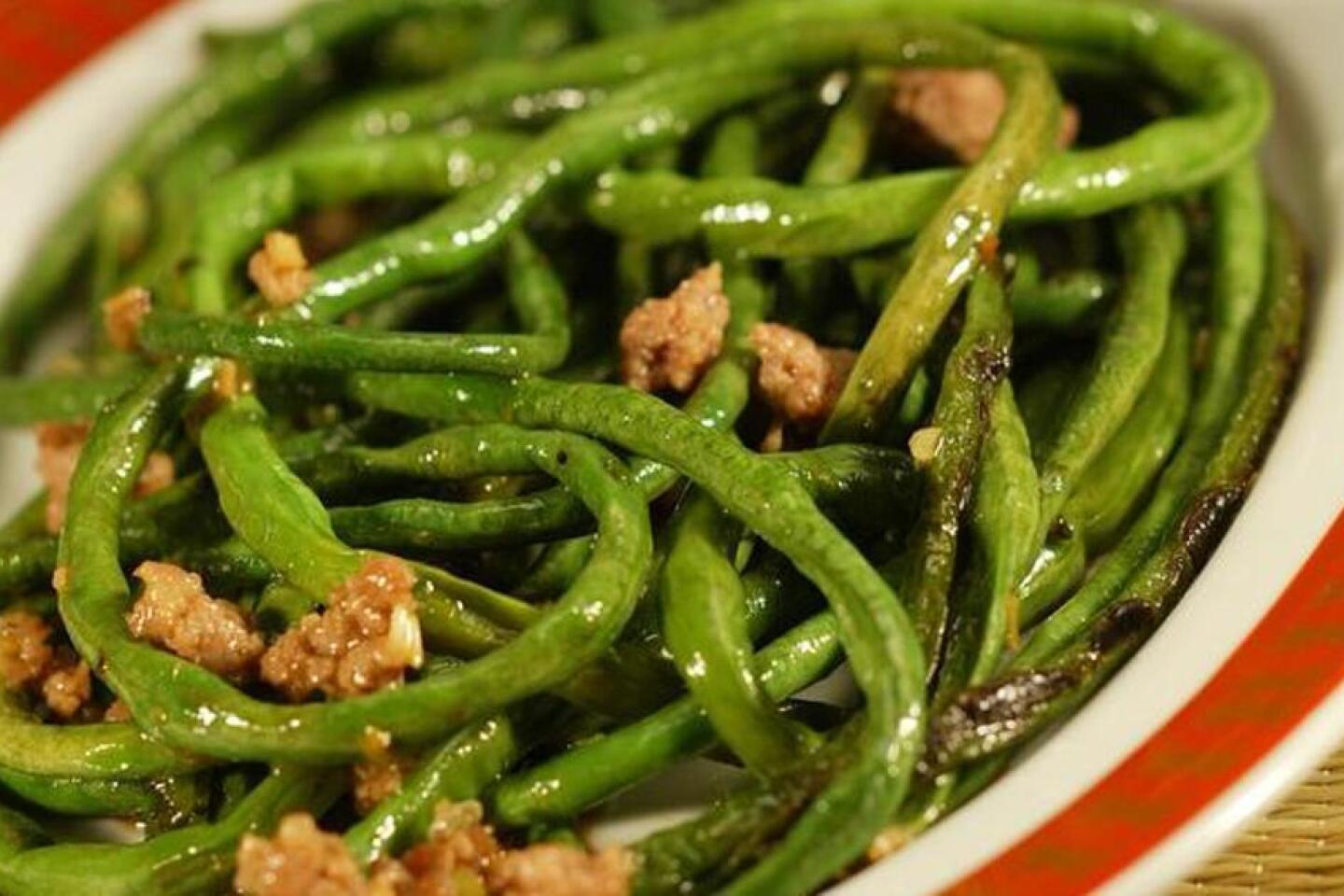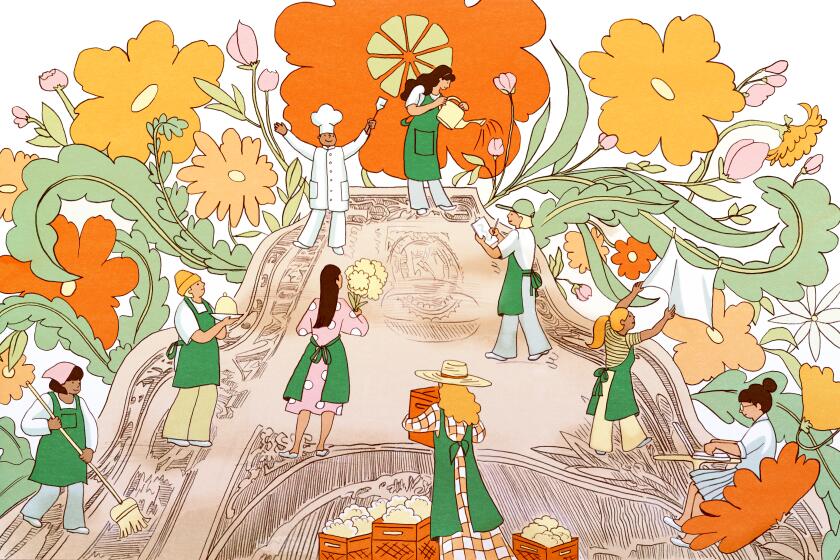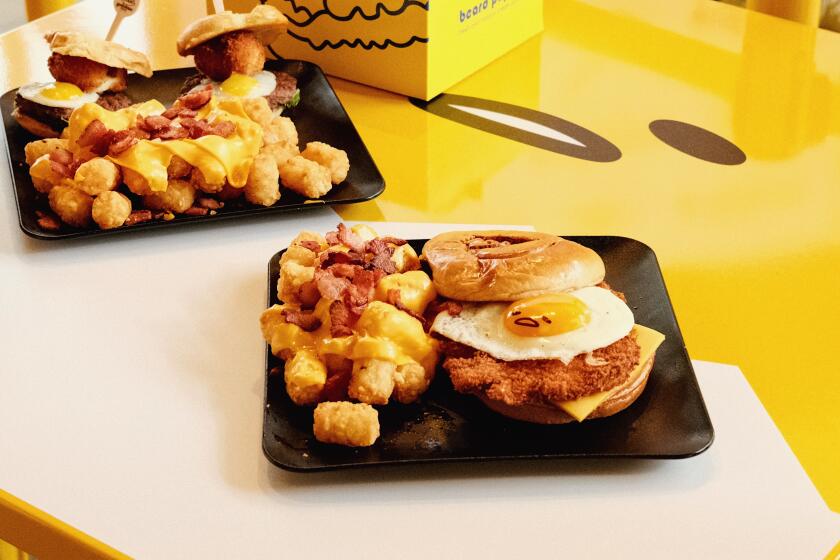Buy this now: Beans, with 12 recipes
Beans can seem complicated. They come in different colors — green, yellow and purple are the most common. And in different shapes — round and flat — and different sizes — yard-long and fingernail thin. They grow on different types of plants — pole beans climb to the sky while bush beans stay close to the ground.
But in the end, they all taste pretty much the same.
Thank goodness. Because beans, whatever the type, make terrific summer food.
Here’s a very simple dish: Blanch the beans just until tender in plenty of rapidly boiling heavily salted water (5 to 7 minutes). Refresh them in an ice water bath and then pat them dry. Dress with minced garlic, olive oil, lemon juice and a little coarse salt. If you like, add some chopped cherry tomatoes, or maybe some minced herbs such as basil, mint or marjoram (careful with the last, as a little goes a long way).
This will work with green, yellow or even purple beans (although the purple color fades to green during cooking). It will work with fat beans or thin beans, if you just keep an eye on the cooking time (slender haricots verts will take only a minute or two).
About the only type of bean that needs to be treated differently is the flat, thick-skinned bean usually called Romano. While most beans can be cooked very briefly, Romanos really repay a long, slow simmer that will tenderize their tough hulls and turn them almost meaty.
Try this: Simmer freshly chopped tomatoes, onions, garlic and pancetta; add Romano beans and stew until they’re tender, which could take 45 minutes or even longer. The texture is silky and the depth of flavor is amazing.
Some types of Romano beans have a thread running the edge of the hull, which should be removed — you can just snap off one end and pull and the string will unzip. The only way to determine whether your beans have them is to snap a couple and see.
Fun fact: Most green beans had this string until the 1890s (hence the names “string beans” and “snap beans”). It was an early New York plant developer named Calvin Keeney who bred the first stringless beans, which were introduced by Burpee in 1894.
How to choose: Look for beans with deep, saturated color — no matter what the hue. The texture should be crisp enough that the bean will snap when you fold it in two. Do your sorting at the market: Rather than scoop beans by the handful into your bag, pick through them, choosing the ones that are roughly the same size, so they’ll cook evenly, and avoiding any that are kinked or misshapen. This’ll save waste at home.
How to store: Keep beans in a tightly sealed plastic bag in the crisper drawer of your refrigerator. Stored this way, they’ll last up to a week.
Are you a food geek? Follow me on Twitter @russ_parsons1
More to Read
Eat your way across L.A.
Get our weekly Tasting Notes newsletter for reviews, news and more.
You may occasionally receive promotional content from the Los Angeles Times.













